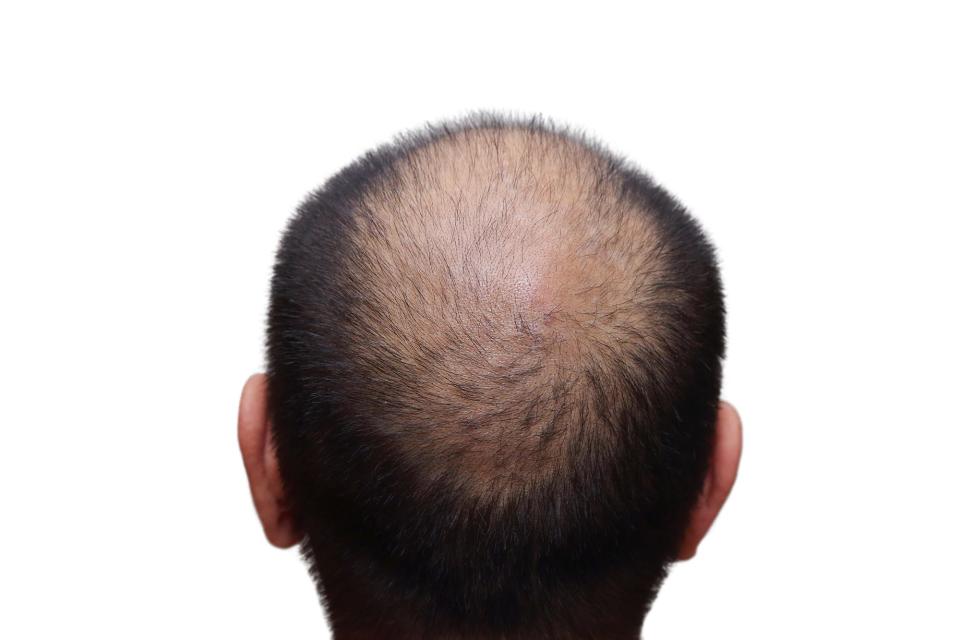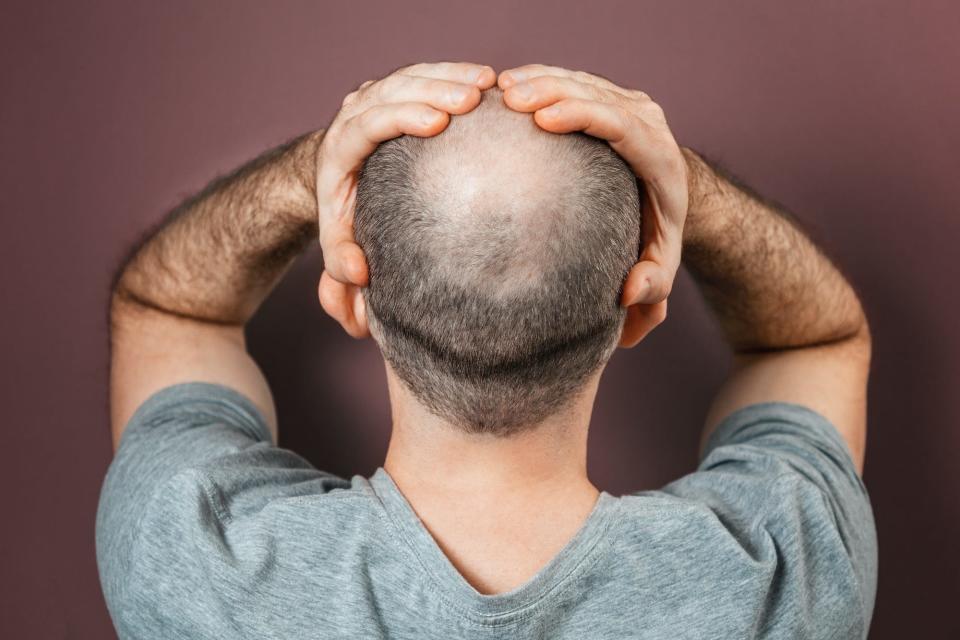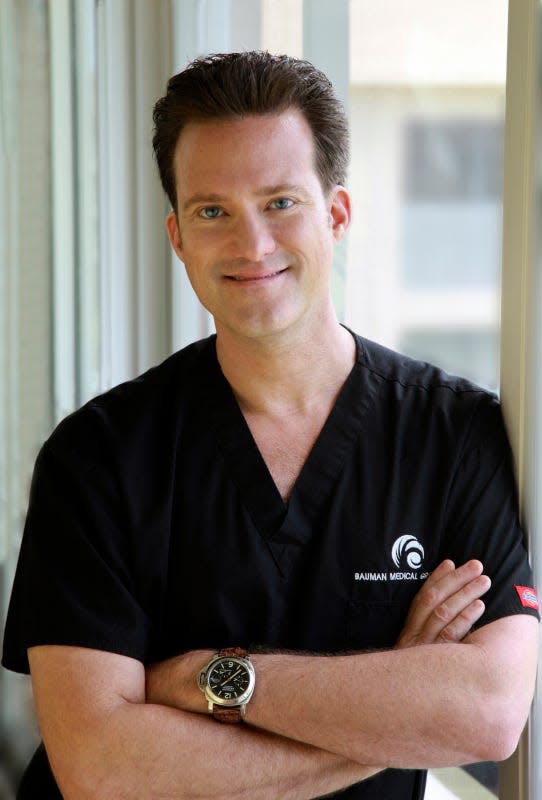Boomer Health: New study details most effective options for male pattern baldness
If you’re a man noticing more hair sticking to your hairbrush or coming off in the shower, perhaps take some comfort in knowing that you’re not alone.
Research shows that some 90% of men will experience some form of hair loss during their lifetimes.


Yes, male-pattern baldness — the thinning or total loss of hair at the temples and top of the scalp is that common.
What — if anything — you choose to do about it is up to you.
But for men considering, or currently taking, pharmaceutical remedies, a recent study might be of interest to you.
Earlier this month, the medical journal JAMA Dermatology published a "meta-analysis" of 23 studies done on various male-pattern baldness medications.
The analysis interpreted research on the relative efficacy of three widely used male-pattern baldness drugs — dutasteride, finasteride and minoxidil — when they were used at different dosages over periods of time ranging from two to four months.
As New York City dermatologist Dr. Anthony Rossi told CNN, “This meta-analysis is important [because] we don't have randomized clinical trials that compare these medications for male-pattern baldness against one another.”
In the studies, the drugs were used for either 24-week or 48-week periods. Here’s how they stacked up against one another:
The analysis found that the medication most likely to reduce male-pattern baldness was a 0.5-milligram oral dosage of dutasteride.
Dutasteride is FDA-approved to treat men who are suffering from benign prostate hyperplasia (BPH). When prescribed by a doctor to treat male hair loss, it’s considered as being used “off-label” — meaning there isn’t clinically tested proof that a drug will be effective for a given condition.
That said, doctors still have the discretion to prescribe off-label because, as Rossi noted “many medications are used off-label, but there's usually enough evidence out there to explain why we believe those drugs will work.”
However, among the troubling potential side effects of dutasteride are a decreased libido, decreased ability to maintain an erection and difficulty with ejaculating.
The second-most effective drug in the analysis was a 5-milligram oral dosage of finasteride.
Like dutasteride, finasteride is also prostate medication; unlike dutasteride, it has been FDA-approved to also treat male hair loss.
Potential side effects with finasteride are similar to those associated with dutasteride.
Third most-effective was a 5-milligram oral dosage of minoxidil.
After that, the fourth most-effective treatment was a 1-milligram oral dosage of finasteride, followed by the topical application of a 5% solution of minoxidil.
The topical version of minoxidil (foam, liquid or shampoo) is sold over-the-counter — and thus does not require a doctor’s prescription.
Minoxidil, in both its oral and over-the-counter forms, requires the user to stay on it in perpetuity. Once usage is stopped, any gains in hair growth will soon be lost. The tradeoff for that, though, is that there aren’t any of the sexual side effects with minoxidil that are associated with dutasteride and finasteride. The most common side effects with minoxidil are dermatological — that is, dryness, itchiness or redness on the scalp.
The study also noted that the different drugs listed above had different potential benefits at different stages of the 24-week and 48-week periods. For instance, finasteride produced the highest total hair count while minoxidil produced the highest production of “mature” hair (as opposed to wispy “baby hairs).
It should also be noted that the study was done solely for male hair loss.
Non-pharmaceutical options
What all experts agree on is that the most important aspects of treating hair loss are to first determine what’s causing the hair loss (stress, medical conditions, illness, etc. are all potential causes of hair loss) and to address it at the first sign.
This is also the time when non-pharmaceutical options tend to be most viable.
Dr. Alan Bauman of Bauman Medical in Boca Raton is one of the nation’s leading hair-restoration physicians and he, like many who specialize in this field, offers an array of safe, non-pharmaceutical options that have no side effects.

For instance, he believes that medical-grade, low-level laser-light therapy caps should be a part of any hair-treatment protocol.
“Proper and consistent use of medical-grade low-level laser therapy treats hair loss, hair thinning and has been scientifically proven to improve the appearance of hair quality, hair strength, and hair thickness, as well as promote hair regrowth,” he says. However, he does caution that “even with consistent use [of a laser cap], it can take six to 12 months to see changes that are visible to the naked eye.”
Medical-grade, low-level laser-light therapy caps are FDA-cleared to treat hair loss in both men and women.
Nutraceuticals are another option for those suffering from hair. These include products such as supplements like Viviscal Professional Hair Growth Vitamins, anti-DHT transdermal patches for androgen-related hair loss, anti-DHT shampoo and supplements directed at cell rejuvenation via telomerase activation.
Minimally invasive treatment with PRP
In recent years, a minimally invasive treatment in which a patient’s platelet-rich plasma (PRP) is injected into the scalp has become increasingly popular.
Dr. Daniela Dadurian of MD Beauty Labs in West Palm Beach says she’s had success doing this treatment on her patients.

As she explains, “The procedure consists of a combination of PRP, which is derived from the patient's own blood and polydioxanone (PDO) threads. A vial of the patient's blood is drawn, centrifuged and the patient's own platelets, growth and repair factors from the blood are immediately re-injected into the scalp. The treatment is done in a series of three treatments four weeks apart. The growth factors in the PRP stimulate the hair follicles to grow, thus increasing hair density and thickness.
A second component of this treatment are the PDO threads, which she explains “are absorbable sutures that originally were developed for cardiac surgery and are now cleared by the FDA for aesthetic procedures. For hair restoration purposes, small PDO threads are placed in the scalp before PRP is injected. Once placed in the scalp the threads dissolve over a period of four to six months. They are not visible to the naked eye and cannot be felt by the patient, but they stimulate collagen and elastin production, the main factors necessary for hair growth.”
Finally, Dadurian adds injectable Thymosin Beta 4 peptides “twice daily for 10 days after the combination PRP and threading treatment because it has also been shown to help stimulate further hair growth.”
This article originally appeared on Palm Beach Post: Boomer health: study of the most effective hair loss remedies

